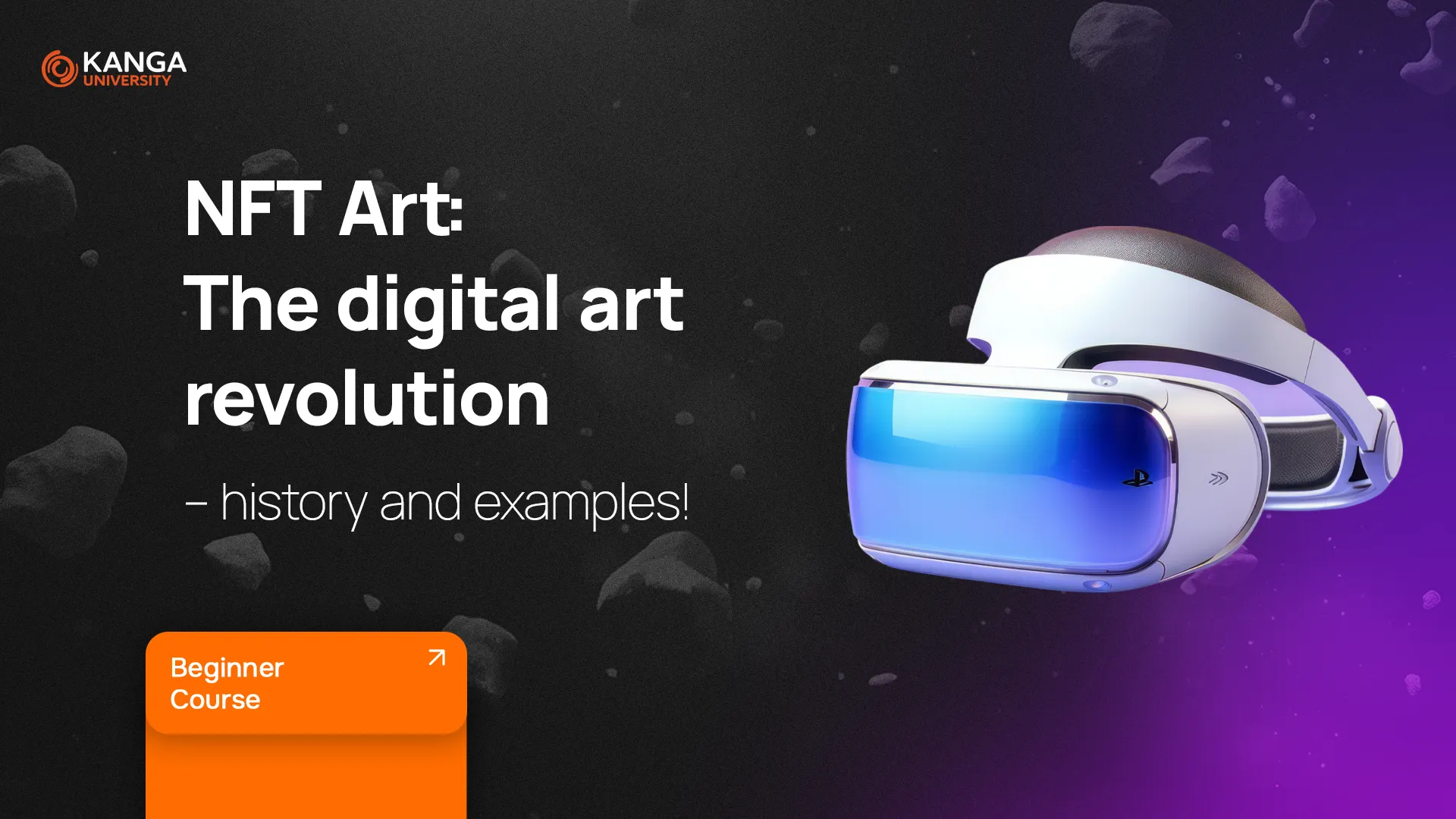
Digital art has undergone a real revolution in recent years, with NFTs being one of its key elements. This technology allows artists to sell their works in an entirely new way, while collectors can invest in digital artworks without intermediaries.
But what exactly is NFT Art? How does it work? And is it just a passing trend or the future of art?
What Is NFT Art?
NFT (Non-Fungible Token) is a type of digital certificate that proves a particular file—such as an image, animation, or music track—is unique and irreplaceable. NFTs are stored on a blockchain, ensuring that their history, ownership, and authenticity can be verified by anyone.
With NFTs, artists can sell their digital works just like traditional paintings or sculptures. When someone buys an NFT, they don’t receive a physical object but a digital proof of ownership confirming that the artwork belongs to them.
How Does NFT Art Work?
NFT Art is created and stored as tokens on a blockchain, most commonly on Ethereum. Each NFT contains information about the artwork, its creator, and its transaction history.
This means that when an artist sells their work as an NFT, anyone can check:
- Who the current owner is
- When and for how much it was sold
- Who the original creator was
One of the biggest advantages of NFTs is that artists can set a royalty percentage, earning a commission from every future resale of their artwork. This is a major difference from traditional art sales, where artists typically only profit from the initial sale.
NFT Art vs. Traditional Art – Key Differences
NFTs are transforming the way we perceive art, but how exactly do they differ from traditional paintings or sculptures?
- Storage – Physical artwork requires space, while NFTs exist purely in digital form and are stored on a blockchain.
- Sales process – Traditional art is sold through galleries or auctions, whereas NFTs can only be bought and sold on dedicated online platforms.
- Accessibility – NFTs can be purchased from anywhere in the world with internet access, whereas traditional art often requires physical viewing before purchase.
- Market volatility – The NFT market is more unpredictable than the traditional art market, offering both higher risks and the potential for rapid profits.
The History of NFT Art
Although NFTs have gained mainstream popularity in recent years, their history dates back to the early days of blockchain technology.
- In 2014, the first NFT, called Quantum, was created by Kevin Abosch.
- In 2017, the game CryptoKitties introduced NFTs to a wider audience by allowing users to buy and sell virtual cats. The game became incredibly popular and helped bring NFTs into the mainstream.
- In 2021, Beeple’s artwork “Everydays: The First 5000 Days” was sold for $69.3 million, marking a turning point for NFT Art.
From that moment on, NFT Art started attracting more artists, investors, and collectors.
Advantages of NFT Art
- New earning opportunities for artists – NFTs remove intermediaries, giving creators more control over their work.
- Passive income – Artists can earn royalties from every future resale of their artwork.
- Global accessibility – Any artist can sell their work worldwide without needing galleries or exhibitions.
- No physical damage – Traditional paintings can be damaged, but NFTs exist in digital form, eliminating that risk.
Disadvantages of NFT Art
- Market volatility – NFT prices can rise and fall unpredictably, making investment risky.
- High transaction fees – Using blockchain, especially Ethereum, comes with high gas fees.
- Lack of legal regulation – NFTs are still a new technology, and ownership rights are not always clearly defined.
- Risk of theft – Many cases of stolen NFTs have emerged, with artworks being sold without the original artist’s permission.
Notable Examples of NFT Art
“Everydays: The First 5000 Days” – Beeple
One of the most expensive digital artworks, sold for $69.3 million at an auction. It consists of 5,000 images created daily over 13 years.
“CryptoKitties” – Dapper Labs
A collectible game that helped introduce NFTs to the mainstream. Players could breed and trade unique virtual cats, each represented as an NFT.
“The First Twitter Tweet” – Jack Dorsey
The co-founder of Twitter sold his first-ever tweet as an NFT for $2.9 million, marking a historic moment for social media and NFTs.
Summary
NFT Art represents one of the biggest revolutions in digital art. With blockchain technology, artists can sell their works directly to buyers without intermediaries, while collectors can own digital artworks in a new format.
However, like any innovation, NFT Art is met with both enthusiasm and criticism. On one hand, it offers new revenue opportunities and global market access for artists. On the other, it carries risks, including market instability, high costs, and legal uncertainties.